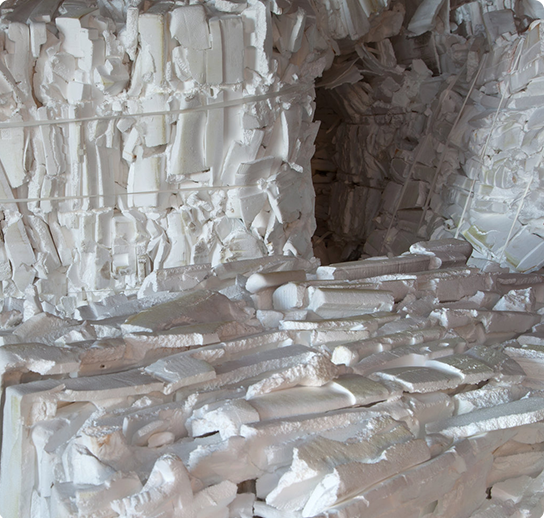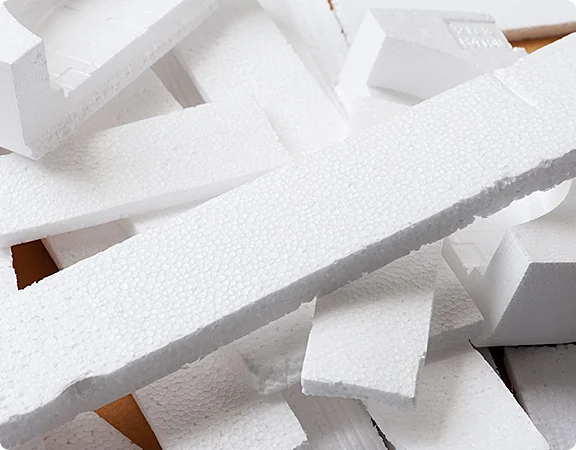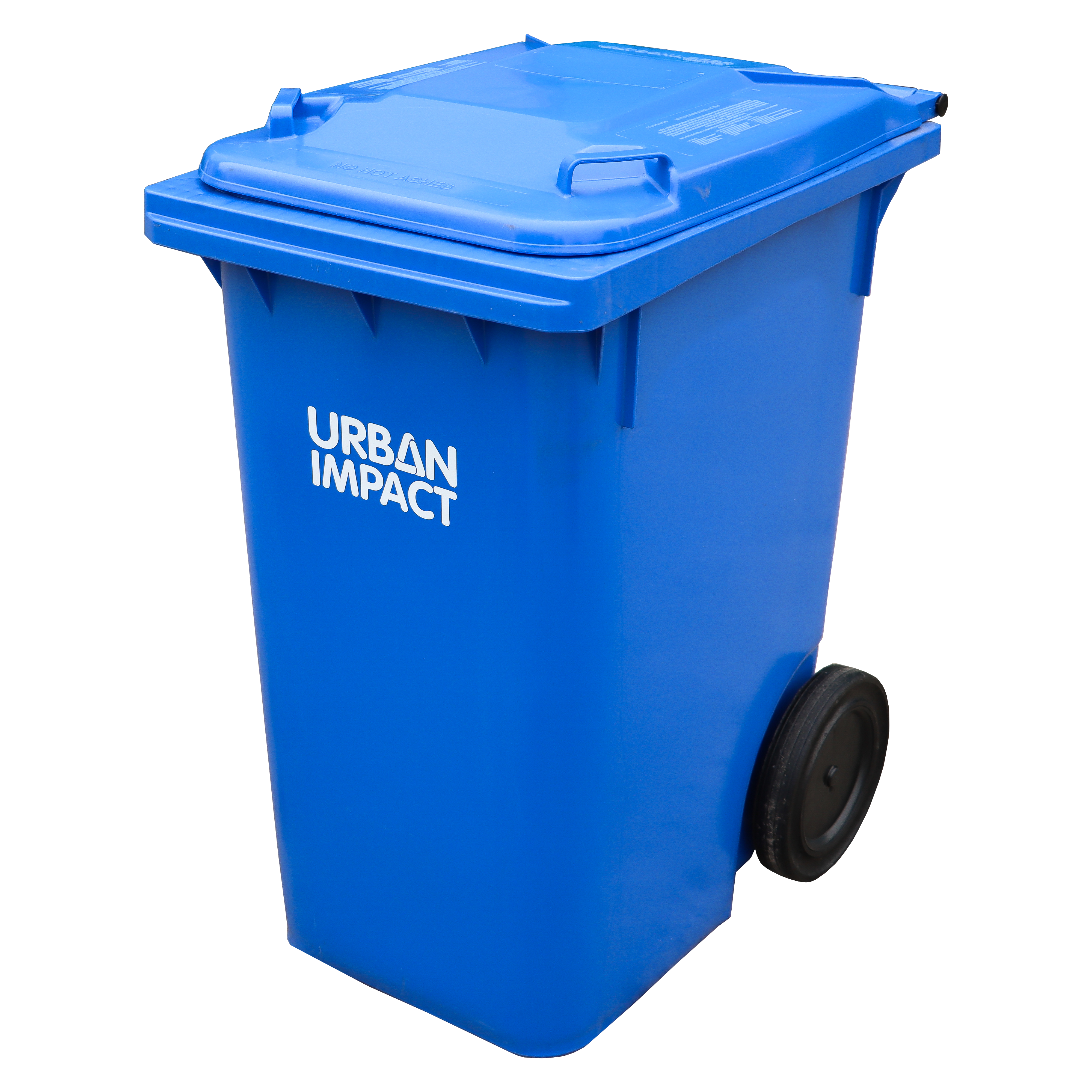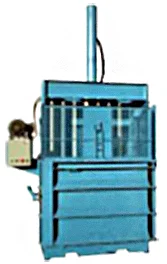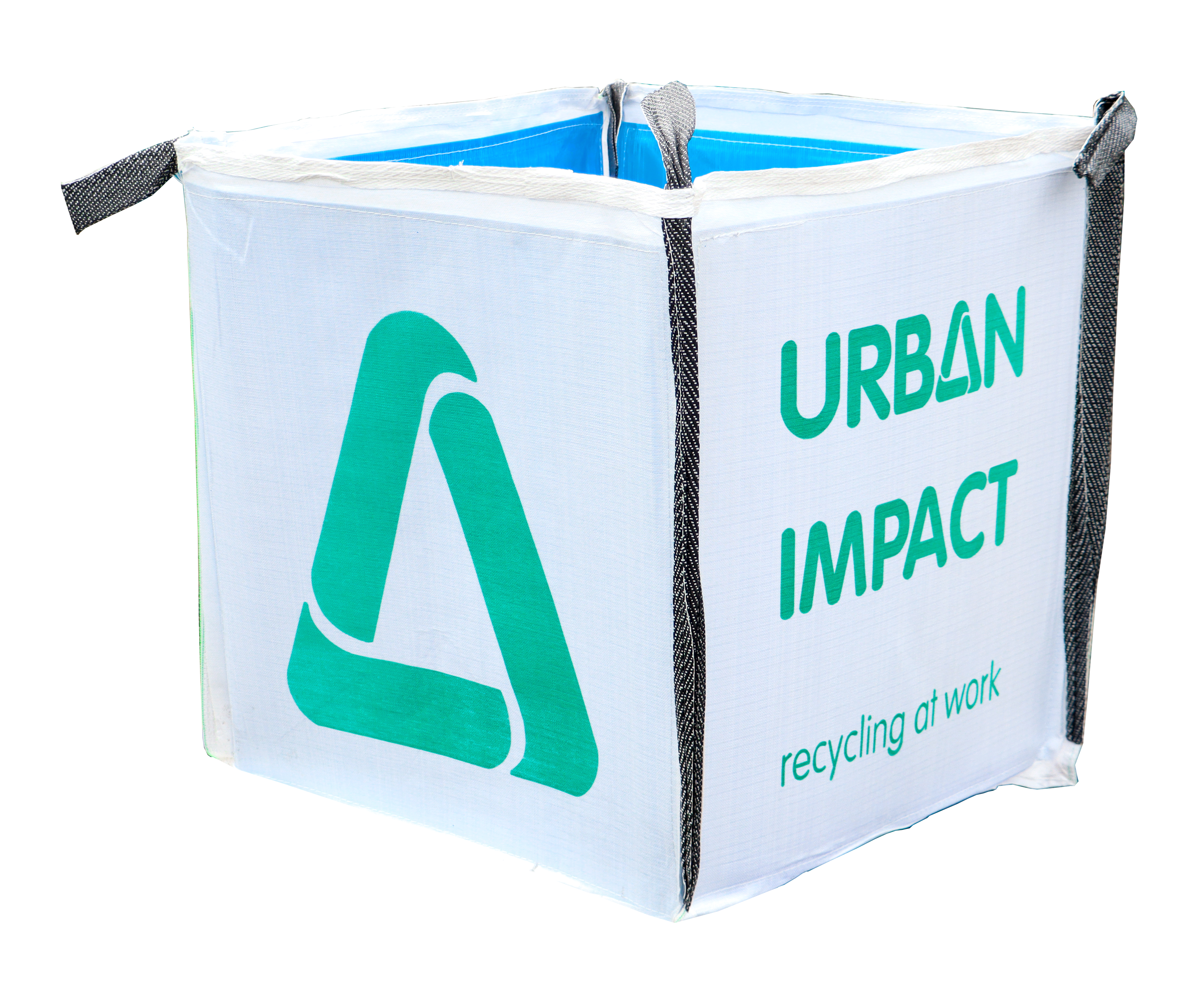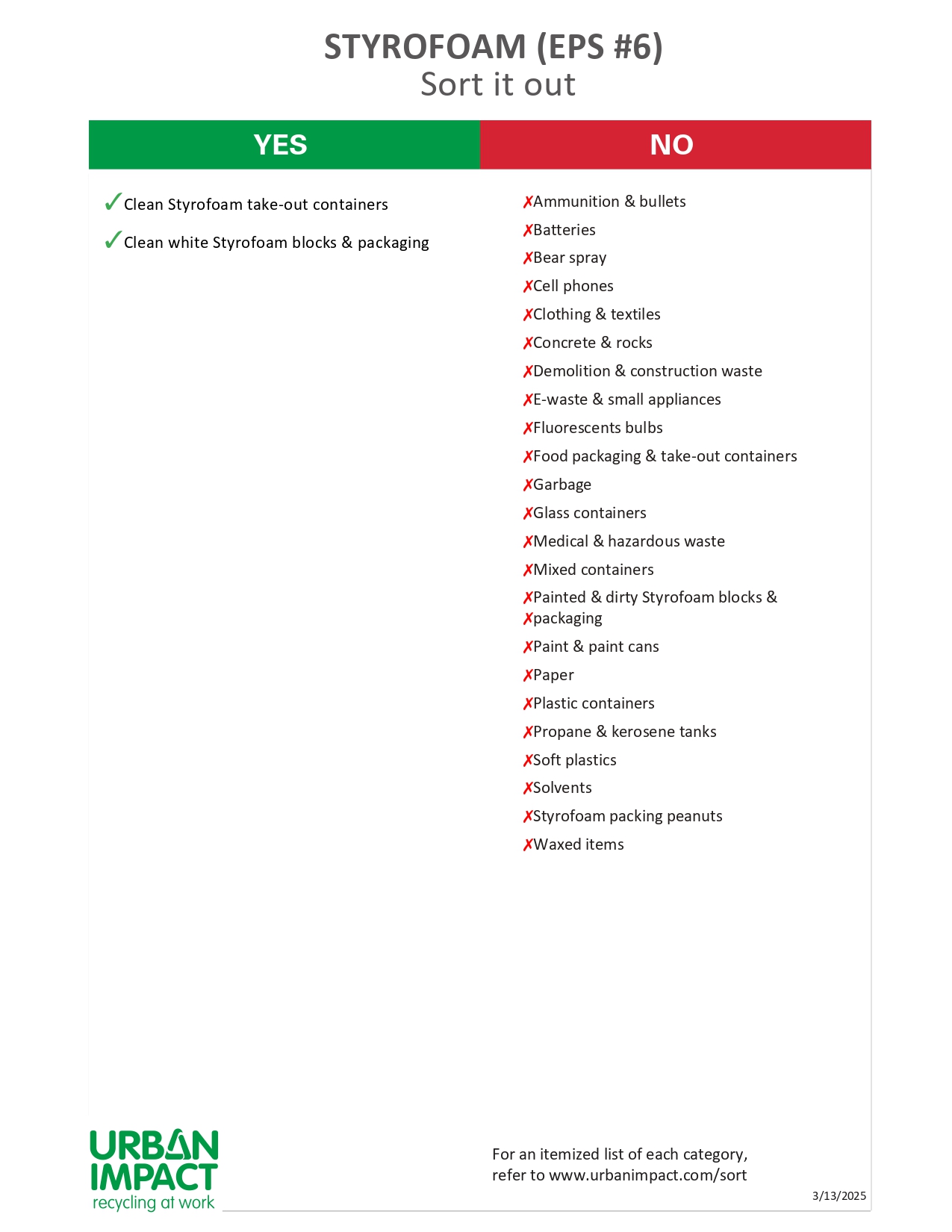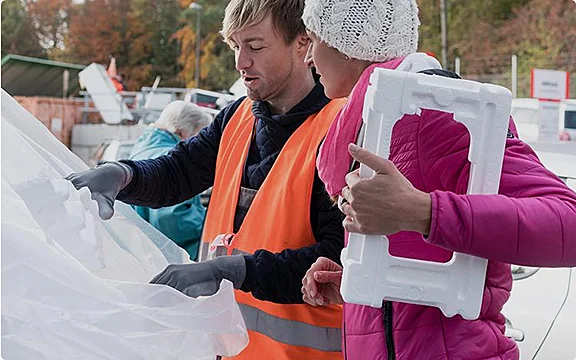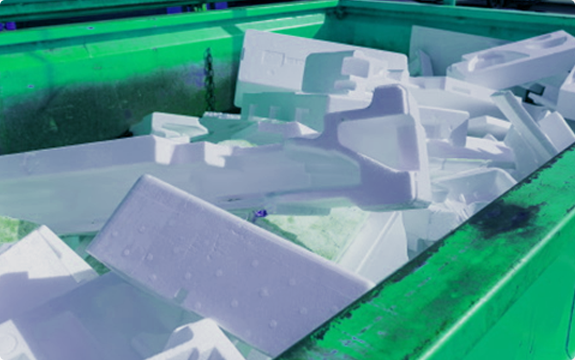Polystyrene is made from petroleum and can be recycled into new products. Polystyrene is noticeably lightweight as it is almost 90% air. Collecting and transporting Polystyrene to a recycling facility is costly because it is bulky, requiring more trucks to transport the materials.
Polystyrene is banned from lower mainland landfills. Keeping it out of the waste stream allows you to avoid any landfill surcharges and because it doesn't break down for hundreds of years.

